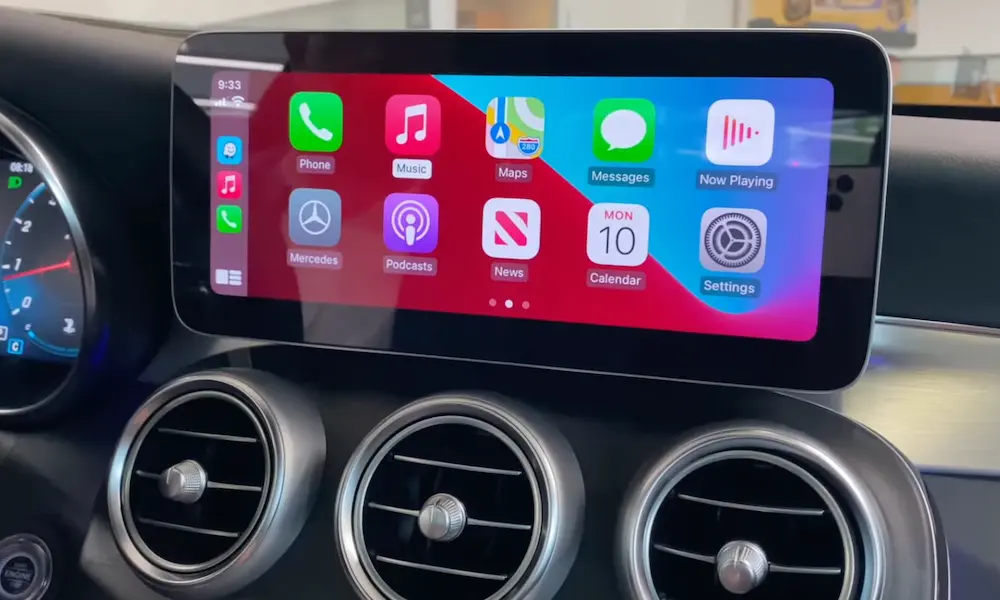If you own a Mercedes, you may have encountered the “ESP unavailable, See Operator’s Manual” message on your dashboard. This indication is related to the Electronic Stability Program (ESP), a critical safety feature in your vehicle. ESP helps maintain stability and prevent skidding or losing control, especially during challenging driving conditions.
It’s essential to understand the potential causes of this issue and how to address them. Factors like a faulty ABS wheel speed sensor, weak battery, or issues with the steering angle sensor can lead to the ESP inoperative message. Being aware of these factors can help you keep your Mercedes in top shape and ensure your safety on the road.
What Is Mercedes-Benz ESP and How Does It Work
Mercedes-Benz ESP, which stands for Electronic Stability Program, is a technology designed to monitor your driving inputs and the vehicle’s motion to ensure stability and control while driving.
The ESP system analyzes the driving stability of your Mercedes-Benz and automatically applies brakes to individual wheels while adjusting the engine output. This helps your car stay within its driving limits, making your driving experience smoother and safer.
ESP works by continuously monitoring your vehicle’s motion, such as speed, steering wheel angle, and lateral acceleration, using a variety of sensors. When the system detects a potential loss of control, it intervenes by applying the brakes to one or more wheels, reducing engine power, and sometimes even adjusting the suspension.
Here is a brief overview of how the ESP system works:
- Sensors: Numerous sensors, like wheel speed sensors and steering angle sensors, collect data on the vehicle’s motion and performance.
- Control Unit: The collected data is processed by the control unit, which identifies any potentially unstable situations.
- Intervention: If needed, the ESP system will intervene by applying the brakes, adjusting engine power, and modifying the suspension to help the vehicle regain stability.
As a result, you get a safer driving experience with better control and stability, especially during cornering, accelerating, or braking on various road conditions. Remember to always drive responsibly and maintain your Mercedes-Benz ESP system to ensure optimum performance.
Common Causes of ESP Unavailable
In this section, we will discuss some common causes of ESP unavailable issues in Mercedes vehicles. By understanding the root of the problem, you can make better decisions and potentially fix the issue yourself.
Faulty Sensors
One of the primary culprits causing the ESP unavailable message is the failure of one of the ABS wheel speed sensors. If a sensor is damaged, it can trigger various warning lights, including ESP malfunction, ABS, and traction control. To diagnose this issue, you may need a diagnostic tool to pull ESP codes and identify the faulty sensor(s).
Low Battery Voltage
A weak vehicle 12-volt battery can also cause the ‘ESP unavailable’ message to appear. If your battery voltage is too low, it might not provide enough power to the ABS and ESP systems. Check the battery’s condition using a voltmeter, and if it’s weak, consider replacing it.
Steering Angle Sensor Issues
Another common issue relates to the steering angle sensor. If it loses calibration after disconnecting the battery, you can recalibrate the sensor with a simple method. With the engine running and your vehicle in park, turn your steering wheel fully lock-to-lock several times. If the message clears, the sensor is recalibrated. If not, a diagnostic check may be required, as improper calibration or a faulty steering angle sensor could lead to ongoing ESP unavailable issues.
Keep these factors in mind when facing ESP unavailable problems in your Mercedes vehicle. Understanding these common causes can help you make informed decisions on how to address the issue and ensure your vehicle’s safety features are functioning correctly.
How to Fix Mercedes ESP Unavailable
Reading Fault Codes
To diagnose the cause of ESP Unavailable in your Mercedes, the first step is to read the fault codes stored in the vehicle’s system. You will need a diagnostic scanner to do this. Simply connect the scanner to your vehicle’s diagnostic port, usually located under the driver’s side dashboard, and the scanner will retrieve any stored fault codes related to the ESP system. Fault codes may refer to problems with wheel speed sensors, steering angle sensors, or other components of the ESP system.
Calibrating the Steering Angle Sensor
One common cause of an ESP Unavailable message is an improperly calibrated steering angle sensor. To calibrate this sensor, follow these steps:
- Start your vehicle’s engine and ensure it is on level ground and parked.
- Turn your steering wheel full lock several times.
- Your vehicle’s system should automatically re-calibrate the sensor.
If the ESP Unavailable message persists, it may signify a more serious issue such as a faulty sensor.
Replacing Faulty Sensors
Sometimes, the cause of ESP Unavailable is a faulty sensor, such as an ABS wheel speed sensor or steering angle sensor. In this case, replacing the faulty sensor often resolves the issue. Here are the steps for replacing an ABS wheel speed sensor:
- Locate the ABS wheel speed sensors on your vehicle. They are usually found near the brake rotors or wheel hubs.
- Disconnect the electrical connector from the faulty sensor.
- Remove the sensor mounting bolt and carefully pull the sensor out of its housing.
- Install the new sensor by reversing the removal steps.
Remember to always consult your vehicle’s manual for exact sensor locations and consult a qualified technician if you are unsure about any aspect of the repair process.
Conclusion
Addressing the “ESP unavailable, See Operator’s Manual” message on your Mercedes is crucial for a safe driving experience. Start by trying to recalibrate the steering angle sensor: turn the steering wheel full lock to lock three times while the engine is running and in park. If this doesn’t work, you might need a diagnostic check to identify the issue.
Remember, taking care of your vehicle and understanding the warnings are essential for responsible ownership.












